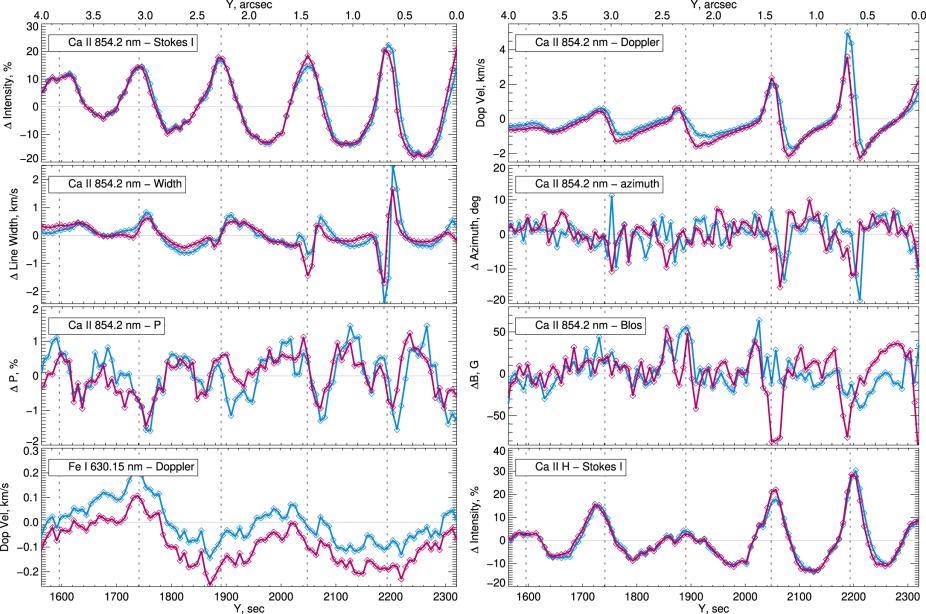The Anatomy of an Umbral Flash
Astrophysical Journal Letters: The Visible Spectro-Polarimeter of the NSF Daniel K. Inouye Solar Telescope collected its Science Verification data on 2021 May 7-8. The instrument observed multiple layers of a sunspot atmosphere simultaneously, in passbands of Ca II 397 nm (H line), Fe I 630 nm, and Ca II 854 nm, scanning the region with a spatial sampling of 0.04 arcsec1 and an average temporal cadence of 7.76 s, for a duration of 38.8 minutes. The slit moved southward across the plane of sky at 3.83 km s-1. The spectropolarimetric scans exhibit prominent oscillatory "ridge" structures that lie nearly perpendicular to the direction of slit motion (north to south). These ridges are visible in the maps of line intensity, central wavelength, line width, and both linear and circular polarization. Contemporaneous Atmospheric Imaging Assembly observations indicate that these ridges are purely temporal in character and are likely attributed to the familiar chromospheric 3 minute umbral oscillations. We observe in detail a steady umbral flash near the center of the sunspot umbra. Although bad seeing limited the spatial resolution, the unique high signal-to-noise ratio data enable us to estimate the shock Mach numbers (~2), propagation speeds (~9 km/s), and their impacts on the longitudinal magnetic field (dB ~ 50 G), gas pressure, and temperature (dT/T ~ 0.1) of subshocks over 30 s. We also find evidence for rarefaction waves situated between neighboring wave train shocks. The Ca II 854 nm line width is fairly steady throughout the umbral flash, except for a sharp 1.5 km/s dip immediately before, and a comparable spike immediately after, the passage of the shock front. This zigzag in line width is centered on the subshock and extends over 0.4 arcsec.

Detrended intensity, line width, azimuth, P, and B LOS cross sections, and raw Doppler cross sections, along the dashed cyan and magenta lines. The vertical dashed lines show the approximate locations of the Ca II 854 nm intensity peaks.